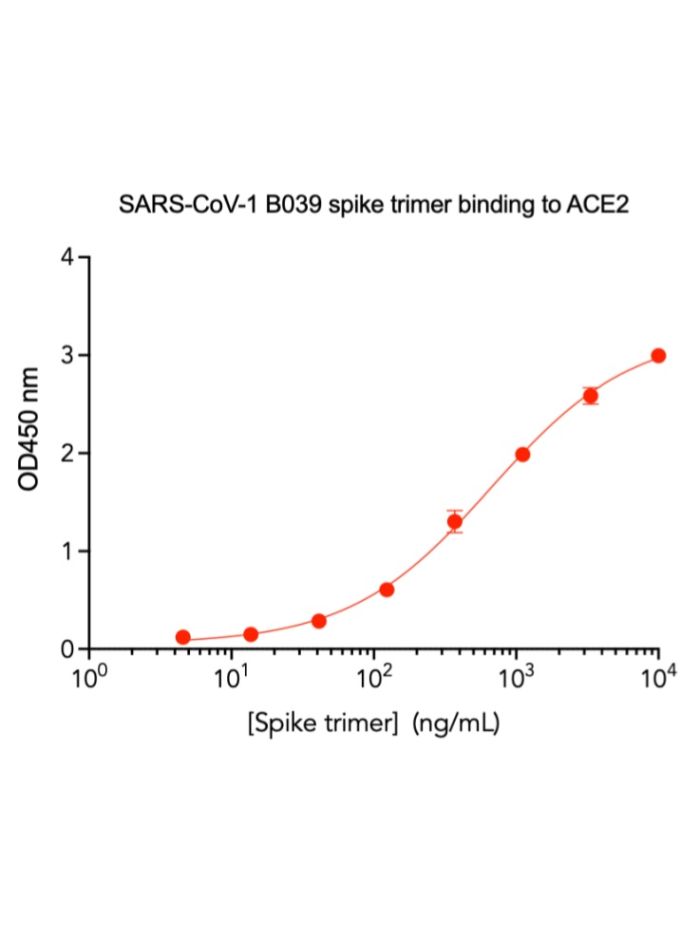SARS-CoV-1 B039 Recombinant Spike Trimer His Tag
SARS-CoV-1 is a beta-coronavirus that initiates infection by binding to the angiotensin-converting enzyme 2 (ACE2) receptor on human cells. SARS-CoV1 shares about 79.6% and 50% overall genomic similarity with SARS-CoV2 and MERS-CoV, respectively (1). SARS-CoV1 contained the spike (S) protein, a type I membrane glycoprotein with multiple functional domains. It binds to cell surface proteins through its S1 subunit and subsequently mediates the fusion of the virus particle and the cell membrane through its S2 subunit (2). SARS-CoV1 enters host target cell through the ACE2 receptor (3). Studying the binding behavior of SARS-Cov1 and SARS-COV2, Shange et al., found that SARS-COV2 binds to angiotensin converting enzyme II (ACE2) more closely and RBD residue changes make binding between the virus and receptor more stable (4). The interaction between the SARS-CoV-1 RBD and ACE2 is crucial for viral entry. The binding interface between the ACE2 receptor and the RBD of the SARS-CoV-1 spike protein, has similar characteristics to the binding interface of the SARS-CoV-2 spike protein. However, there are differences in the binding strength.

